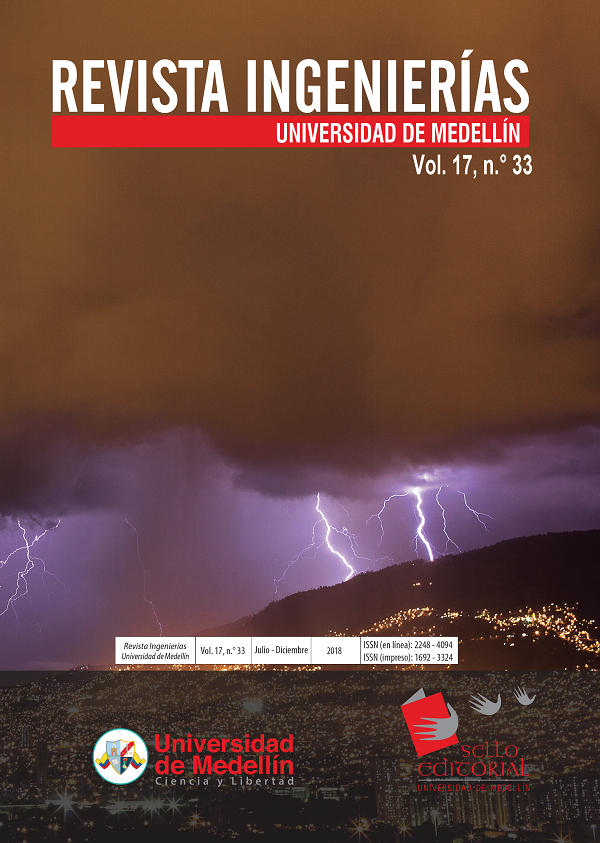Complemento de VS.NET para la definición óptima de pruebas de software de caja negra mediante arreglos de cobertura
Contenido principal del artículo
Resumen
Las pruebas de software pueden llegar a superar el 50 % del costo total de un proyecto de software, motivo por el cual las empresas necesitan una alternativa que permita reducir su costo y el tiempo de su realización. Esta investigación propone el uso de unas estructuras combinatoriales conocidas como arreglos de cubrimiento (CA) y arreglos de cubrimiento mixtos (MCA), que garantizan la detección hasta del 100 % de los errores con una mínima cantidad de pruebas. Con este enfoque, se desarrolló un complemento de Visual Studio.NET para la optimización de las pruebas y se evaluó su uso con estudiantes de último semestre de Ingeniería de Sistemas y de una empresa de software. Los resultados obtenidos son prometedores y motivan al grupo de investigación a divulgar su trabajo en el nivel nacional. El proyecto de investigación fue financiado por la Vicerrectoría de Investigaciones de la Universidad del Cauca.
Detalles del artículo
Citas
[1] I. Burnstein, Practical software testing: a process-oriented approach, Luxemburgo: Springer Science & Business Media, 2006.
[2] J. Tuya, et al., Técnicas cuantitativas para la gestión en la ingeniería del software, As Somozas: Netbiblo, 2007.
[3] A. Mili y F. Tchier, Software Testing: Concepts and Operations, Nueva Jersey:Wiley Publishing, 2015.
[4] S. Nidhra y J. Dondeti, 'Black Box and White Box Testing Techniques ‒A Literature Review,' International Journal of Embedded Systems and Applications (IJESA), vol. 2, pp. 29-50, 2012.
[5] S. Anand, et al., 'An orchestrated survey of methodologies for automated software test case generation,' Journal of Systems and Software, vol. 86, pp. 1978-2001, 2013.
[6] C. P. Jayaswal y T. U. o. T. a. Arlington, Automated Software Testing Using Covering Arrays, Texas: University of Texas at Arlington, 2006.
[7] B. S. Ahmed, et al., 'The development of a particle swarm based optimization strategy for pairwise testing,' Journal of Artificial Intelligence, vol. 4, pp. 156-165, 2011.
[8] A. Arcuri y X. Yao, 'Search based software testing of object-oriented containers,' Information Sciences, vol. 178, pp. 3075-3095, 2008.
[9] G. J. B. T. S. C. Myers, The art of software testing, third edition. Hoboken, Nueva Jersey: John Wiley & Sons, 2012.
[10] N. Changhai y H. Leung, 'A Survey of Combinatorial Testing,' ACM Computing Surveys, vol. 43, pp. 11-29, 2011.
[11] S. A. Bestoun yK. Z. Zamli, 'A review of covering arrays and their application to software testing,' Journal of Computer Science, vol. 7, pp. 1375-1385, 2011.
[12] H. Avila-George, et al., Verificación de Covering Arrays: aplicando la supercomputación y la computación grid. Nueva York: Lambert Academic Publishing, 2010.
[13] H. Avila-George y J. Torres-Jiménez, Construction of Test-Suites: Omniscriptum Gmbh & Company Kg., 2015.
[14] F. J. Pino, et al., 'Using Scrum to guide the execution of software process improvement in small organizations,' Journal of Systems and Software, vol. 83, pp. 1662-1677, 2010.
[15] D. R. Kuhn, et al., 'Software fault interactions and implications for software testing,' Software Engineering, IEEE Transactions on, vol. 30, pp. 418-421, 2004.
[16] M. BrÄić y D. Kalpić, 'Combinatorial testing in software projects,' presentado en Proceedings of the 35th International Convention MIPRO, 2012, pp. 1508-1513.
[17] I. I. Márquez, Construcción de Torres de Covering Arrays. [En línea], Disponible: http://www.tamps.cinvestav.mx/defensa_2013_7, 2013.
[18] M. B. Cohen, et al., 'Constructing test suites for interaction testing,' presentado en the Proceedings of the 25th International Conference on Software Engineering, Portland, Oregon, 2003.
[19] M. B. Cohen, et al., 'Constructing strength three covering arrays with augmented annealing,' Discrete Mathematics, vol. 308, pp. 2709-2722, 2008.
[20] A. Rodríguez-Cristerna and J. Torres-Jiménez, 'A Simulated Annealing with Variable Neighborhood Search Approach to Construct Mixed Covering Arrays,' Electronic Notes in Discrete Mathematics, vol. 39, pp. 249-256, 2012.





